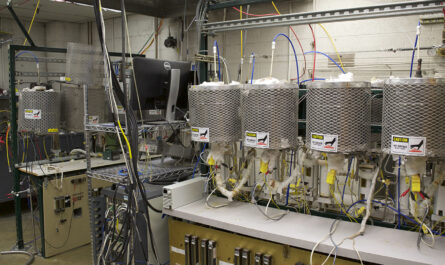A team of researchers from Xidian University in China has recently unveiled the design and technology details of a space solar-powered satellite (SSPS). The SSPS is an innovative energy system that harnesses solar power in space and transmits it to Earth or other targets via microwave. This breakthrough in technology could potentially solve the global energy crisis.
The team’s research, known as the Sun-Chasing Project, involved the development of the OMEGA 2.0 SSPS. They successfully completed a full-link and full-system ground demonstration and verification system for this project, as reported in Engineering journal. The study introduces the design concept of the SSPS, as well as the key technologies and the development of the ground demonstration and verification system.
The research focused on several critical technologies for the SSPS, including efficient solar power collection and photoelectric conversion, microwave conversion, microwave wireless power transmission, beam-forming optimization, accurate microwave beam pointing measurement and control, microwave reception and rectification, and smart mechanical structure design.
In the Sun-Chasing Project, solar power is collected using spherical crown concentrators and then wirelessly transmitted via microwaves over a distance of 55 meters. The transmission involves over 2 kW of microwave power emitted from a circular active phased array with a diameter of 1.2 meters. An impressive 87.3% of the transmitted power is captured by a rectenna with a diameter of 5.2 meters.
The team’s groundbreaking SSPS ground verification system emulates the key components of a real SSPS in outer space. It enables sun tracking, photoelectric conversion, high voltage and large power transmission and management, as well as smart mechanical structures. This achievement is a significant step forward in the development of future SSPS technology.
The versatile design of the SSPS ground verification system has the capability to track the sun, concentrate collected solar power, convert solar power to direct current (DC) power, beam the power to a rectenna using microwaves, and convert the microwave power back to DC power. These features simulate the complete working process of an actual SSPS in outer space.
This research not only has the potential to pave the way for the advancement of SSPS technology in the future, but it also highlights the wide range of applications of microwave wireless power transmission technology. For instance, satellites in the near future could be equipped with foldable rectenna arrays instead of traditional solar panels. A transmitting antenna could serve as a power source to charge these satellites equipped with rectenna arrays.
The unveiling of the design and technology details of the SSPS represents a significant milestone in the field of space solar energy. With ongoing advancements and further research, SSPS technology could revolutionize the way we collect and utilize solar power in the future.
*Note:
1. Source: Coherent Market Insights, Public sources, Desk research
2. We have leveraged AI tools to mine information and compile it




